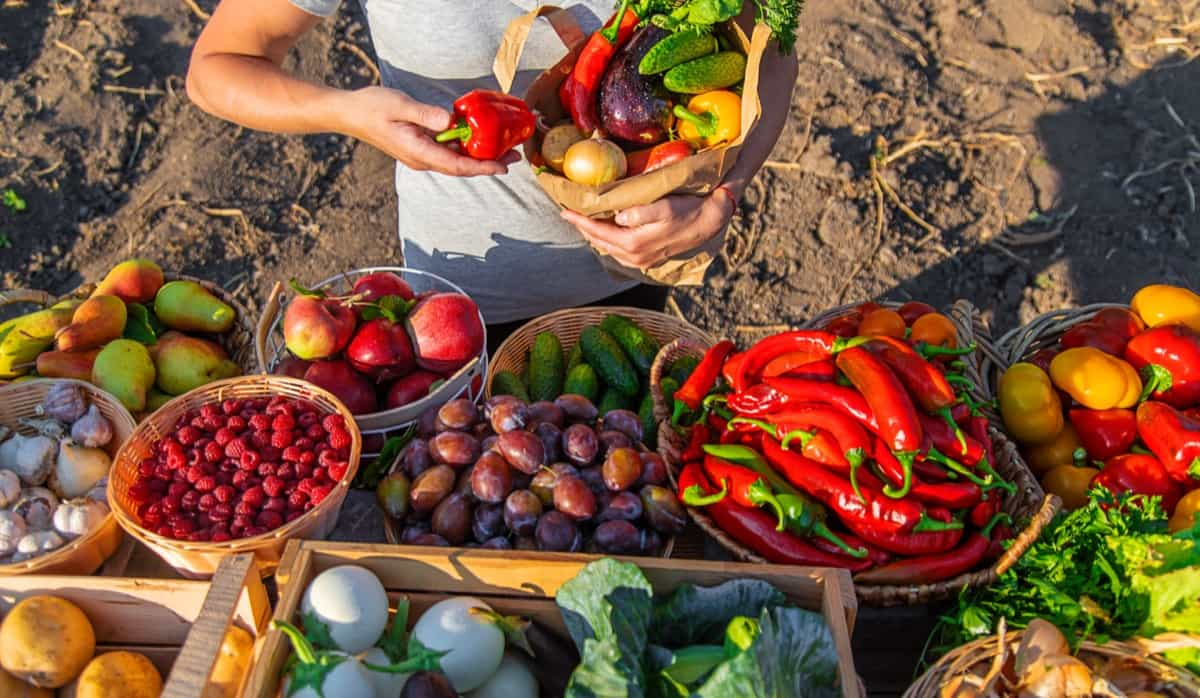Discover the best fertilizers to elevate your crop yield! In this guide, we delve into the top fertilizers for boosting the growth of vegetables, fruits, flowers, and various crops. Whether you’re a seasoned farmer or a gardening enthusiast, understanding the right nutrients and application methods is crucial. We’ll explore organic and synthetic options tailored to enhance plant health and productivity.

This knowledge is key to achieving bountiful harvests and vibrant blooms. Fertilizers are substances that provide nutrients to plants for their growth and development. They can be organic, inorganic, natural, synthetic, solid or liquid, slow-release or fast-acting. Fertilizers can improve crop yield by enhancing soil fertility, increasing nutrient uptake efficiency, and stimulating plant growth.
Best Fertilizers to Increase Crop Yield
Nitrogen-Based Fertilizers
Nitrogen is a crucial macronutrient for plants, involved in photosynthesis, protein synthesis, and chlorophyll formation. Deficiency cause to stunted growth, yellowing leaves, reduced flowering and fruiting, and lower crop quality and quantity. Nitrogen-based fertilizers, such as urea, ammonium nitrate, sodium nitrate, potassium nitrate, and calcium ammonium nitrate, are widely used in agriculture to supply large amounts of nitrogen quickly and efficiently.
These fertilizers can increase crop yield by boosting plant growth, enhancing leaf size and color, improving crop quality and flavor, and increasing resistance to pests and diseases. However, they can also leach into groundwater, cause soil acidification, and increase the risk of nitrate poisoning in humans and animals. Therefore, nitrogen-based fertilizers should be used with caution and moderation. Best practices include:
- Applying them at the right time.
- Applying them at the right rate.
- Incorporating them into the soil or irrigating them after application.
- Avoiding application on wet or frozen soils.
- Using them in combination with organic matter or other nutrients to improve soil health and nutrient balance.
Phosphorus-Based Fertilizers
Phosphorus is one of the macronutrients for plants, as its role in energy transfer, photosynthesis, root development, flowering, and seed formation. Phosphorus-based fertilizers are derived from phosphate rocks, which are mined and processed to produce various forms of phosphorus, such as superphosphate, diammonium phosphate, monoammonium phosphate, rock phosphate, and bone meal.
In case you missed it: Tailoring DIY Vegetable Plants Fertilizers to Different Growth Phases

Phosphorus-based fertilizers are usually applied to the soil before planting or during the early stages of growth, as phosphorus is less mobile in the soil and needs to be close to the roots for uptake. Phosphorus-based fertilizers can improve crop yield and quality, especially for crops that require high amounts of phosphorus, such as cereals, oilseeds, legumes, fruits, and vegetables.
Potassium-Based Fertilizers
Potassium is another essential macronutrient for plants, as it regulates water balance, osmotic pressure, enzyme activity, stomatal opening, transport of sugars and proteins, and resistance to stress and diseases. Potassium-based fertilizers are derived from potash ores, which are mined and processed to produce various forms of potassium, like potassium chloride, potassium sulfate, potassium nitrate, and potassium-magnesium sulfate.
Potassium-based fertilizers are usually applied to the soil during the growing season or as a foliar spray, as potassium is more mobile in the soil and can be leached by rainfall or irrigation. Potassium-based fertilizers can enhance crop quality and shelf life, especially for crops that require high amounts of potassium, such as potatoes, tomatoes, bananas, grapes, and citrus.
Organic Fertilizers
Organic fertilizers are natural materials that contain plant or animal matter or their by-products, such as manure, compost, blood meal, fish meal, seaweed extract, and guano. Organic fertilizers provide a range of nutrients to the plants, as well as organic matter that improves soil structure, water retention, microbial activity, and biodiversity.
Organic fertilizers are applied to the soil before planting, during the growing season, depending on their nutrient release rate and decomposition speed. Organic fertilizers can increase soil fertility and crop productivity, especially for organic farming systems that rely on natural inputs and avoid synthetic chemicals.
Biofertilizers
Biofertilizers are living microorganisms that enhance plant growth and nutrition by fixing atmospheric nitrogen, solubilizing phosphorus, mobilizing potassium, or producing plant growth hormones. Biofertilizers include bacteria (such as Rhizobia, acetobacter, and Bacillus), fungi (such as mycorrhiza and Trichoderma), and algae (such as cyanobacteria and microalgae). Biofertilizers are usually applied to the seeds or roots of the plants or the soil before planting or during the growing season. Biofertilizers can reduce the need for chemical fertilizers and improve soil health and crop quality.
In case you missed it: 9 Best Multi-Purpose Fertilizers in India: Guide to Buying Top Multi-Purpose Fertilizers

Slow-Release Fertilizers
Slow-release fertilizers are synthetic or organic materials that release nutrients gradually over time to match the plant’s demand. Slow-release fertilizers can be coated with polymers or resins (such as urea-formaldehyde or sulfur-coated urea), encapsulated in capsules or granules (such as osmocote or nutricote), or blended with inhibitors or stabilizers (such as nitrification inhibitors or urease inhibitors).
Slow-release fertilizers are usually applied to the soil before planting or at the beginning of the growing season. Slow-release fertilizers can reduce nutrient losses due to leaching or volatilization and improve nutrient use efficiency and crop performance.
Liquid Fertilizers
Liquid fertilizers are solutions or suspensions that contain dissolved or suspended nutrients in water or other solvents. Liquid fertilizers can be clear liquids (such as urea ammonium nitrate or calcium nitrate) or suspensions (such as suspension fertilizers or fluidized bed reactors). Liquid fertilizers are usually applied to the soil through drip irrigation systems or fertigation systems or to the leaves through foliar sprays. Liquid fertilizers can provide fast and uniform nutrient delivery and absorption by plants and can be easily mixed with other agrochemicals.
Microbial Inoculants
Microbial inoculants are preparations that contain beneficial microorganisms that improve plant growth and health by enhancing nutrient availability, suppressing pathogens, or inducing systemic resistance. Microbial inoculants include biofertilizers, biopesticides (such as Bacillus thuringiensis), biostimulants (such as pseudomonas fluorescent), and biocontrol agents (such as Trichogramma spp.). Microbial inoculants are usually applied to the seeds or roots of the plants or the soil before planting or during the growing season. Microbial inoculants can reduce the dependence on chemical inputs and increase crop yield and quality.
Seaweed Extracts
Seaweed extracts are liquid or solid products that are obtained from marine algae (such as Ascophyllum nodosum, sargassum spp., or Laminaria spp.) by physical or chemical processes. Seaweed extracts contain a variety of nutrients, such as nitrogen, phosphorus, potassium, calcium, magnesium, iron, zinc, manganese, boron, copper, and molybdenum, as well as organic compounds, such as alginic acid, mannitol, laminarin, fucoidan, cytokinins, auxins, and gibberellins.
Seaweed extracts are usually applied to the soil or the leaves as a foliar spray. Seaweed extracts can stimulate plant growth and development, enhance stress tolerance and disease resistance, and improve crop quality and yield.
Humic Substances
Humic substances are complex organic molecules that are formed from the decomposition of plant, animal matter in the soil. Humic substances include humic acid, fulvic acid, and humin. Humic substances can chelate and transport nutrients and metals in the soil, increase the cation exchange capacity and water-holding capacity of the soil, stimulate microbial activity and diversity in the soil, and modulate plant hormone levels and gene expression. Humic substances are usually applied to the soil or the leaves as a foliar spray. Humic substances can improve soil fertility and crop performance.
In case you missed it: Polyhalite Fertilizers and their Role in Organic Farming

Calcium-Based Fertilizers
Calcium is crucial for plants as it helps build strong cell walls, regulate enzyme activity, and transport nutrients. Deficiency can cause problems like blossom end rot in tomatoes, bitter pit in apples, and tip burn in lettuce. Calcium-based fertilizers are available in various forms, including shells (egg, clam, or oyster), lime (calcium carbonate), gypsum (calcium sulfate), wood ash, bone meal, and calcium nitrate. Shells contain 98% calcium carbonate, which can be into powder and mixed with water or compost to create a calcium-rich fertilizer.
Lime, a refined and processed source, provides calcium and magnesium to the soil but also raises soil pH. Gypsum, a calcium sulfate, improves soil structure by reducing compaction and improving drainage. Wood ash, a by-product of burning wood, contains 7 to 33% calcium and potassium, phosphorus, magnesium, and micronutrients. Bone meal, a calcium phosphate source, stimulates root growth and flowering in plants but can attract rodents and dogs.
Castle nitrate, a synthetic fertilizer with 19% calcium and 15% nitrogen, can be applied as a liquid fertilizer through drip irrigation or foliar spray. It provides fast-acting calcium and nitrogen to plants and can prevent certain plant diseases caused by calcium deficiency. However, it is expensive and can easily leach out of the soil.
Magnesium-Based Fertilizers
Magnesium is crucial for plants as it is in chlorophyll, the green pigment that enables photosynthesis. Deficiency can cause chlorosis in leaves, making it essential to provide adequate magnesium through fertilization. Common magnesium-based fertilizers include dolomite, a natural source of calcium and magnesium carbonate, which can provide both nutrients to the soil and raise soil pH. Epsom salt, a magnesium sulfate, is a liquid fertilizer that provides fast-acting magnesium without affecting soil pH and enhances plant flavor and color, especially beneficial for tomatoes, peppers, and roses.
Sulfur-Based Fertilizers
Sulfur is a crucial nutrient for plants, involved in metabolic processes like amino acid synthesis, protein formation, chlorophyll production, and stress resistance. However, sulfur deficiency is becoming more common due to intensive cropping, reduced atmospheric deposition, and low sulfur inputs from fertilizers.
Sulfate-containing fertilizers provide sulfur in a form (SO4-2) that is immediately available for plant uptake. They are compatible with most soil types and crops, easy to handle and apply, and have low hygroscopicity and chemical stability. However, they can be expensive, leach easily from sandy or low organic matter soils, acidify the soil, and cause salt accumulation or toxicity.
Elemental sulfur-based fertilizers contain up to 90% of sulfur by weight and are cheaper than sulfate-containing fertilizers. They have a long-lasting effect on soil sulfur supply and can lower soil pH and increase the availability of other nutrients. However, they require a longer time to become plant-available and depend on soil biological factors.
In case you missed it: DIY Homemade Soil Fertilizers and Flower Boost Recipes for the Home Garden

Liquid sulfur fertilizers are solutions or suspensions of sulfur-containing compounds that can be applied through irrigation systems or foliar sprays. They allow precise and uniform application of sulfur, can be mixed with liquid fertilizers or pesticides, provide rapid sulfur uptake by plants, and correct sulfur deficiency symptoms quickly. However, they can be more costly than solid fertilizers, cause corrosion or clogging of irrigation equipment, and have limited residual effect on soil sulfur supply.
Balanced NPK Fertilizers
NPK stands for nitrogen, phosphorus, and potassium, which are the three primary macronutrients for plants. Balanced NPK fertilizers are those that provide these nutrients in equal or similar proportions, such as 10-10-10, 15-15-15, or 20-20-20. These fertilizers are suitable for general-purpose use, as they can support the growth and development of most crops.
- They provide complete and balanced nutrition for plants
- They are easy to use and apply
- They are widely available and affordable
Best Fertilizers to Increase Vegetable Yield
Leafy Vegetables (like lettuce, spinach, and kale): These vegetables thrive with high-nitrogen fertilizers such as ammonium nitrate, urea, or ammonium sulfate. Application rates should be 1 to 2 pounds of actual nitrogen per 1000 square feet. It’s essential to apply before planting and then side-dress every 2 to 4 weeks.
Root Vegetables (carrots, beets, and radishes): Opt for low-nitrogen fertilizers like 5-10-10 or 6-12-12 formulations. Apply 2-3 pounds of fertilizer per 1000 square feet before planting, and consider side-dressing once or twice during the growth period.
Fruit Vegetables (e.g., tomatoes, peppers, cucumbers): Balanced fertilizers, for example, 10-10-10 or 15-15-15, are best suited. Use 2 to 3 pounds per 1000 square feet before planting, and side-dress every 2 to 4 weeks.
Legume Vegetables (like beans, peas, and lentils): These require low-nitrogen or no-nitrogen fertilizers (examples are 0-20-20 or 0-46-0). The application rate is 1 to 2 pounds per 1000 square feet before planting. Side-dressing is usually not necessary but can be done if needed.
Best Fertilizers to Increase Fruit Yield
Fruit trees need a balanced and high-nitrogen fertilizer to produce healthy and abundant fruits. Nitrogen helps the trees to grow new leaves, branches, and flowers, which are essential for fruit formation. The best fertilizers for fruit trees are those that have an NPK ratio of 12-0-0, 15-0-0, or 16-0-0, a balanced fertilizer high in nitrogen such as 6-2-1 or 10-2-2, or a different fertilizer where nitrogen (N) is dominant.
| Product Name | NPK Ratio | Type |
| Jobe’s Organics 9227 | 3-5-5 | Granular |
| Fox Farm Liquid Nutrient Trio Soil Formula | Varies | Liquid |
| FoxFarm FX14002 Big Bloom Liquid Concentrate | 0.01-0.3-0.7 | Liquid |
| Jobe’s 100046754 1612 Fertilizer Spike | 15-3-3 | Spike |
| Miracle-Gro Fruit & Citrus Plant Food Spikes | 10-15-15 | Spike |
Best Fertilizers to Increase Flower Yield
Flowers need a balanced and high-phosphorus fertilizer to produce vibrant and long-lasting blooms. Phosphorus helps plants develop strong roots, stems, and buds, which are essential for flower formation. The best fertilizers for flowers are those that have an NPK ratio of 10-30-20, 15-30-15, or 20-20-20 or a balanced fertilizer high in phosphorus, such as 5-10-5 or 10-10-10 or a different fertilizer where phosphorus (P) is dominant.
| Product Name | NPK Ratio | Type |
| Miracle-Gro Water Soluble Bloom Booster Flower Food | 15-30-15 | Granular |
| Osmocote Smart-Release Plant Food Flower & Vegetable | 14-14-14 | Granular |
| Schultz All Purpose Plant Food Plus | 10-15-10 | Liquid |
| Jobe’s Organics Flower & Rose Granular Fertilizer with Biozome | 3-5-3 | Granular |
| Miracle-Gro Shake ‘N Feed Rose & Bloom Plant Food | 10-18-9 | Granular |
Best Fertilizers to Increase Crops Yield
Crops need a balanced and high-potassium fertilizer to produce high-quality and high-yield harvests. Potassium helps plants resist diseases, pests, and droughts, which are essential for crop survival. The best fertilizers for crops are those that have an NPK ratio of 13-13-13, 15-15-15, or 20-20-20 or, a balanced fertilizer high in potassium, such as 5-5-10 or 10-10-20, or a different fertilizer where potassium (K) is dominant.
In case you missed it: The Best Lawn Grass Fertilizers Guide: Nourishing with Organic, Slow Release, Natural, and Quick Release Fertilizers

| Product Name | NPK Ratio | Type |
| Urea | 46-0-0 | Granular |
| DAP | 18-46-0 | Granular |
| MOP | 0-0-60 | Granular |
| NPK | Varies | Granular |
| Compost | Varies | Granular |
Conclusion
Selecting the right fertilizer, be it high-nitrogen, balanced NPK, or organic compost, is crucial for boosting yields in vegetables, fruits, flowers, and other crops. Understanding each crop’s specific needs ensures optimal growth and abundant harvests.
- Types of Pesticides Used in Agriculture: A Beginner’s Guide
- Economical Aquaculture: A Guide to Low-Budget Fish Farming
- 15 Common Planting Errors That Can Doom Your Fruit Trees
- How to Make Houseplants Bushy: Effective Tips and Ideas
- Innovative Strategies for Boosting Coconut Pollination and Yield
- Pollination Strategies for Maximum Pumpkin Yield
- The Complete Guide to Chicken Fattening: Strategies for Maximum Growth
- Natural Solutions for Tulip Problems: 100% Effective Remedies for Leaf and Bulb-Related Issues
- Revolutionizing Citrus Preservation: Towards a Healthier, Greener Future
- Natural Solutions for Peony Leaf and Flower Problems: 100% Effective Remedies
- Maximizing Profits with Avocado Contract Farming in India: A Comprehensive Guide
- Natural Solutions for Hydrangea Problems: 100% Effective Remedies for Leaf and Flowers
- The Ultimate Guide to Choosing the Perfect Foliage Friend: Bringing Life Indoors
- From Sunlight to Sustainability: 15 Ways to Use Solar Technology in Agriculture
- The Ultimate Guide to Dong Tao Chicken: Exploring from History to Raising
- The Eco-Friendly Makeover: How to Convert Your Unused Swimming Pool into a Fish Pond
- Mastering the Art of Delaware Chicken Farming: Essentials for Healthy Backyard Flocks
- 20 Best Homemade Fertilizers for Money Plant: DIY Recipes and Application Methods
- How to Craft a Comprehensive Free-Range Chicken Farming Business Plan
- Brighten Your Flock: Raising Easter Egger Chickens for Beauty and Bounty
- How to Optimize Your Poultry Egg Farm Business Plan with These Strategies
- Subsidy for Spirulina Cultivation: How Indian Government Schemes Encouraging Spirulina Farmers
- Ultimate Guide to Raising Dominique Chickens: Breeding, Feeding, Egg-Production, and Care
- Mastering the Art of Raising Jersey Giant Chickens: Care, Feeding, and More
- Ultimate Guide to Raising Legbar Chickens: Breeding, Farming Practices, Diet, Egg-Production
- How to Raise Welsummer Chickens: A Comprehensive Guide for Beginners
- How to Protect Indoor Plants in Winter: A Comprehensive Guide
- Ultimate Guide to Grow Bag Gardening: Tips, Tricks, and Planting Ideas for Urban Gardeners
- Guide to Lotus Cultivation: How to Propagate, Plant, Grow, Care, Cost, and Profit
- Agriculture Drone Subsidy Scheme: Government Kisan Subsidy, License, and How to Apply Online
- Ultimate Guide to Raising Araucana Chickens: Breed Profile, Farming Economics, Diet, and Care
- Bringing Hydroponics to Classroom: Importance, Benefits of Learning for School Students
- Ultimate Guide to Raising Polish Chickens: Breed Profile, Farming Economics, Diet, and Care
- Ultimate Guide to Raising Australorp Chickens: Profile, Farming Economics, Egg Production, Diet, and Care
- Silkie Chicken Farming: Raising Practices, Varieties, Egg Production, Diet, and Care
- Sussex Chicken Farming: Raising Practices, Varieties, Egg Production, Diet and Care